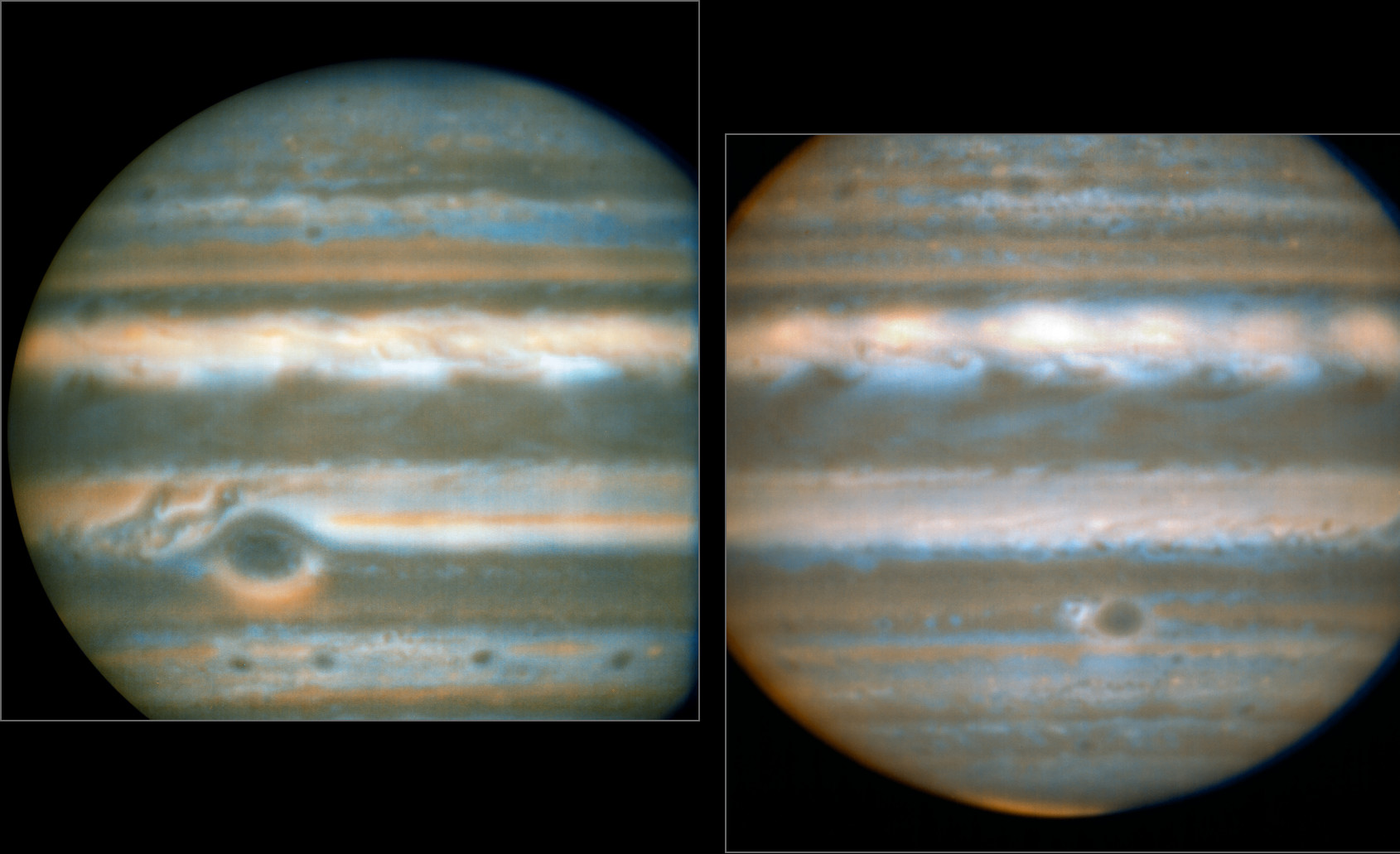
Based partly on data from generations of NASA missions, including NASA’s Voyager and Cassini, the work could help scientists determine how to predict weather on Jupiter.
Scientists have completed the longest-ever study tracking temperatures in Jupiter’s upper troposphere, the layer of the atmosphere where the giant planet’s weather occurs and where its signature colorful striped clouds form. The work, conducted over four decades by stitching together data from NASA spacecraft and ground-based telescope observations, found unexpected patterns in how temperatures of Jupiter’s belts and zones change over time. The study is a major step toward a better understanding of what drives weather at our solar system’s largest planet and eventually being able to forecast it.
Jupiter’s troposphere has a lot in common with Earth’s: It’s where clouds form and storms churn. To understand this weather activity, scientists need to study certain properties, including wind, pressure, humidity, and temperature. They have known since NASA’s Pioneer 10 and 11 missions in the 1970s that, in general, colder temperatures are associated with Jupiter’s lighter and whiter bands (known as zones), while the darker brown-red bands (known as belts) are locations of warmer temperatures.
But there weren’t enough data sets to understand how temperatures vary over the long-term. The new research, published Dec. 19 in Nature Astronomy, breaks ground by studying images of the bright infrared glow (invisible to the human eye) that rises from warmer regions of the atmosphere, directly measuring Jupiter’s temperatures above the colorful clouds. The scientists collected these images at regular intervals over three of Jupiter’s orbits around the Sun, each of which lasts 12 Earth years.
In the process, they found that Jupiter’s temperatures rise and fall following definite periods that aren’t tied to the seasons or any other cycles scientists know about. Because Jupiter has weak seasons – the planet is tilted on its axis only 3 degrees, compared to Earth’s jaunty 23.5 degrees – scientists didn’t expect to find temperatures on Jupiter varying in such regular cycles.
The study also revealed a mysterious connection between temperature shifts in regions thousands of miles apart: As temperatures went up at specific latitudes in the northern hemisphere, they went down at the same latitudes in the southern hemisphere – like a mirror image across the equator.
“That was the most surprising of all,” said Glenn Orton, senior research scientist at NASA’s Jet Propulsion Laboratory and lead author of the study. “We found a connection between how the temperatures varied at very distant latitudes. It’s similar to a phenomenon we see on Earth, where weather and climate patterns in one region can have a noticeable influence on weather elsewhere, with the patterns of variability seemingly ‘teleconnected’ across vast distances through the atmosphere.”
The next challenge is to find out what causes these cyclical and seemingly synchronized changes.
“We’ve solved one part of the puzzle now, which is that the atmosphere shows these natural cycles,” said co-author Leigh Fletcher of the University of Leicester in England. “To understand what’s driving these patterns and why they occur on these particular timescales, we need to explore both above and below the cloudy layers.”
One possible explanation became apparent at the equator: The study authors found that temperature variations higher up, in the stratosphere, seemed to rise and fall in a pattern that is the opposite of how temperatures behave in the troposphere, suggesting changes in the stratosphere influence changes in the troposphere and vice versa.
Decades of Observations
Orton and his colleagues began the study in 1978. For the duration of their research, they would write proposals several times a year to win observation time on three large telescopes around the world: the Very Large Telescope in Chile as well as NASA’s Infrared Telescope Facility and the Subaru Telescope at the Maunakea Observatories in Hawaii.
During the first two decades of the study, Orton and his teammates took turns traveling to those observatories, gathering the information on temperatures that would eventually allow them to connect the dots. (By the early 2000s, some of the telescope work could be done remotely.)
Then came the hard part – combining multiple years’ worth of observations from several telescopes and science instruments to search for patterns. Joining these veteran scientists on their long-duration study were several undergraduate interns, none of whom had been born when the study began. They are students at Caltech in Pasadena, California; Cal Poly Pomona in Pomona, California; Ohio State University in Columbus, Ohio; and Wellesley College in Wellesley, Massachusetts.
Scientists hope the study will help them eventually be able to predict weather on Jupiter, now that they have a more detailed understanding of it. The research could contribute to climate modeling, with computer simulations of the temperature cycles and how they affect weather – not just for Jupiter, but for all giant planets across our solar system and beyond.
“Measuring these temperature changes and periods over time is a step toward ultimately having a full-on Jupiter weather forecast, if we can connect cause and effect in Jupiter’s atmosphere,” Fletcher said. “And the even bigger-picture question is if we can someday extend this to other giant planets to see if similar patterns show up.”
Gretchen McCartney
Jet Propulsion Laboratory, Pasadena, Calif.
818-393-6215
gretchen.p.mccartney@jpl.nasa.gov
Karen Fox / Alana Johnson
NASA Headquarters, Washington
301-286-6284 / 202-358-1501
karen.c.fox@nasa.gov / alana.r.johnson@nasa.gov
2022-201




























